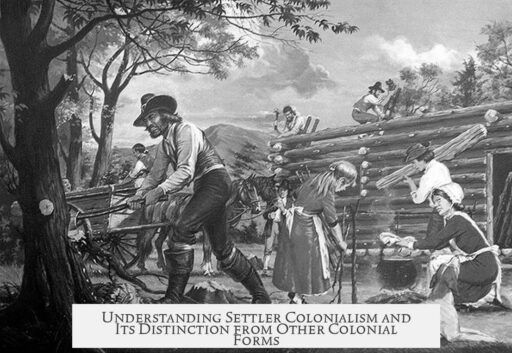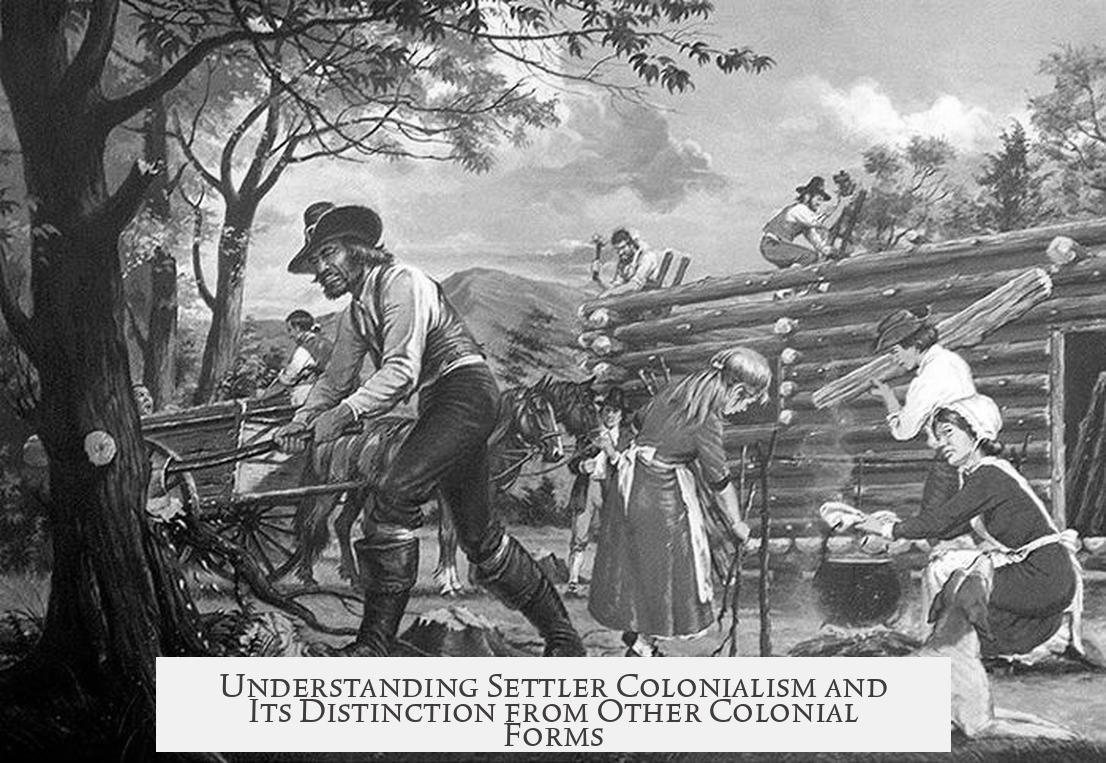Settler colonialism is a distinct form of colonialism characterized primarily by the aim to eliminate and replace the native population with a settler society. Unlike traditional colonialism, which exploits local populations to serve colonial powers, settler colonialism seeks to supplant the indigenous people entirely.
Colonialism broadly involves colonizers establishing dominance over native populations. This may involve resource extraction or political control. Colonizers often govern directly or through native proxies. However, the native population remains present and serves the colonizers’ interests rather than being removed or replaced.
Settler colonialism differs fundamentally in that its objective is “destroying to replace.” The process often goes beyond violence to include displacement, cultural erasure, and assimilation that effectively eliminate native identities. This eradication is not always physical but can be cultural or social, leading to the natives being absorbed or displaced.
Crucially, settler colonialism demands not just the elimination of natives but their replacement by a new settler community. This includes the creation of a society that denies or erases the memory and claims of the indigenous people. Settler colonial powers commonly invoke the concept of terra nullius—the notion that the land was uninhabited or “discovered” by them—to justify their claims.
This goal of replacement sharply contrasts with other forms of colonialism which aim to control native populations rather than erase them. Settler colonialism’s long-term objective is to permanently establish the settler society on the land, effectively redefining territorial and cultural identity.
The concept of settler colonialism is relatively recent in academic discourse. While colonialism has been studied for centuries, focused analysis of settler colonialism as a separate phenomenon gained traction only in the 1990s. Key scholars like Patrick Wolfe and Lorenzo Veracini have been instrumental in defining and exploring this field.
- Colonialism exploits natives but usually maintains their presence for labor or governance.
- Settler colonialism eliminates and replaces native populations.
- Settler colonialism involves claims of land as originally belonging to settlers (terra nullius).
- It includes cultural and identity destruction to erase native populations.
- The academic study of settler colonialism as distinct is a modern development.
What is the core goal of settler colonialism compared to traditional colonialism?
Settler colonialism aims to replace the native population with settlers. Traditional colonialism seeks to control the natives and make them serve the colonizers without removing them.
How does settler colonialism erase native presence?
It destroys native culture and identity through displacement or assimilation. The goal is to absorb or eliminate native memory, making the settler culture the dominant identity.
Why is the concept of “terra nullius” important in settler colonialism?
Settler colonies often claim the land was empty or discovered by them. This idea justifies replacing native populations by erasing their prior connection to the land.
When did academic study of settler colonialism emerge as a distinct field?
The formal study began mainly in the 1990s. It is newer than traditional colonial studies and focuses on the unique dynamics of settler replacement of natives.
Can settler colonialism involve violence only, or are there other methods?
Violence is one method, but displacement and cultural destruction are also used. The key is removing natives to establish a new settler identity, not just conquest or control.




